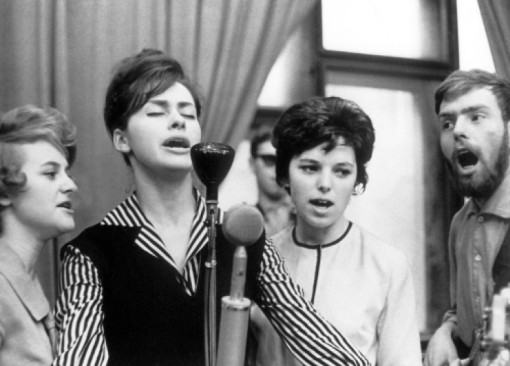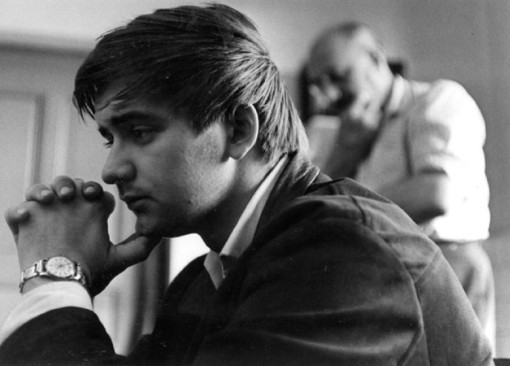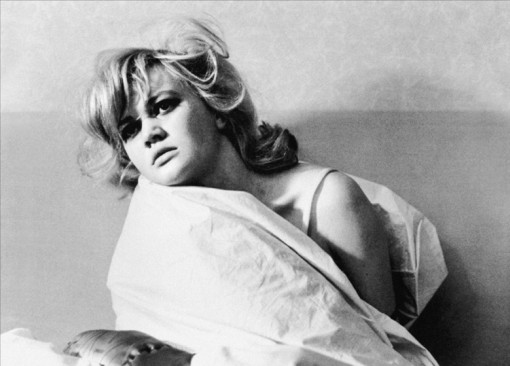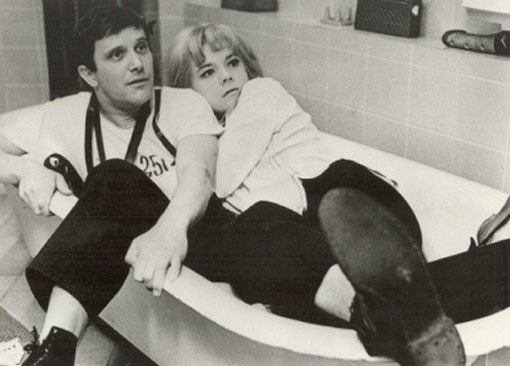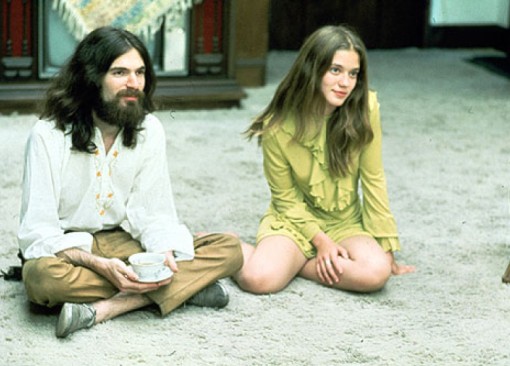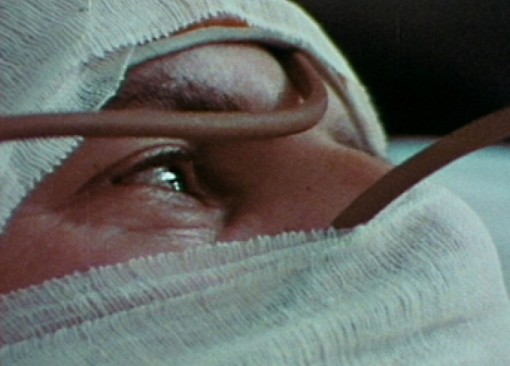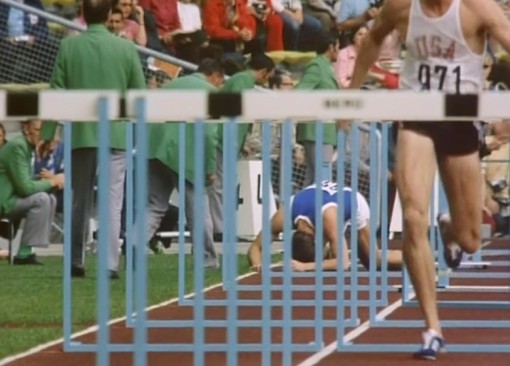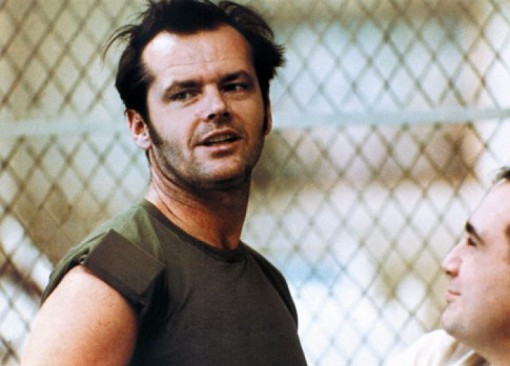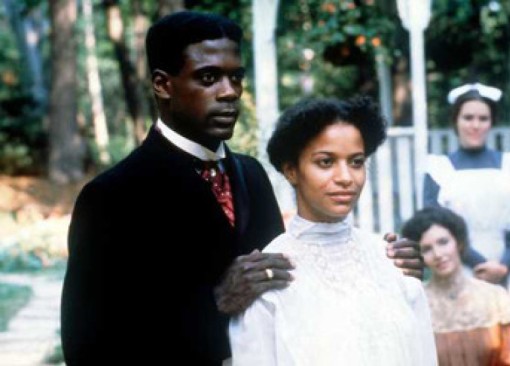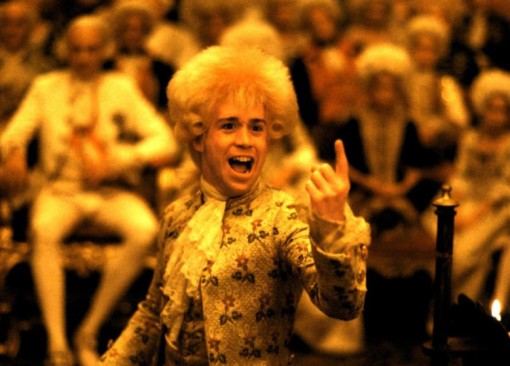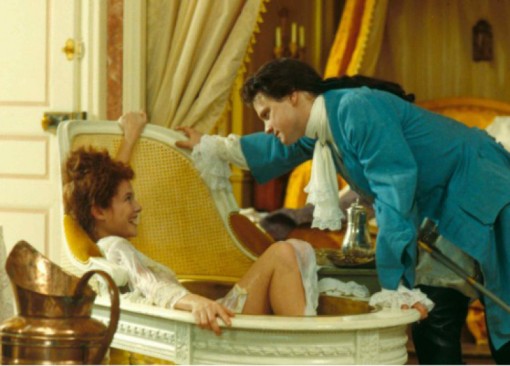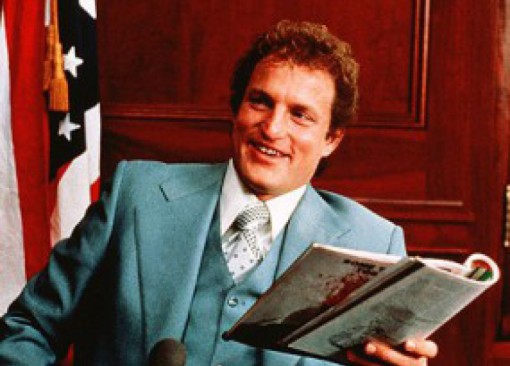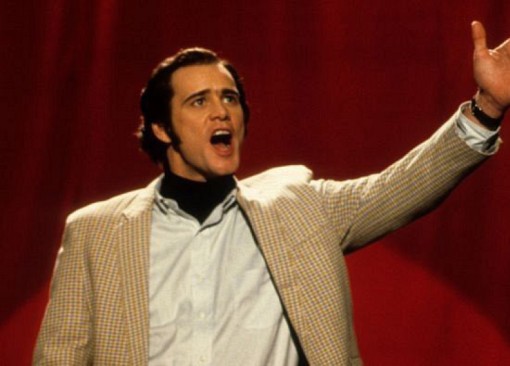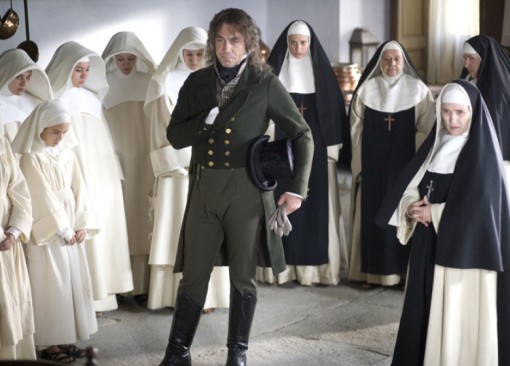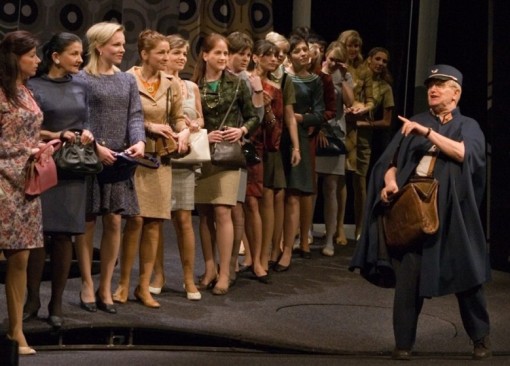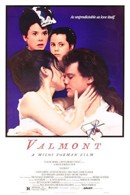“What a film! What screenwriter Jean-Claude Carrière and director Milos Forman have achieved with this film which “Dangerous Liaisons” lacked somewhat is a real sense of the far-reaching tragic ramifications of playing with hearts in the name of fun.”
Whose revenge is more devastating? The revenge of a man, or the revenge of a woman? How do people pay for playing around with the feelings of others? The charming widow the Marquise de Merteuil starts an unscrupulous game of revenge with her ageing lover Gercourt who is leaving her to marry her own cousin, the young Cecile who was raised in a convent.
The Marquise’s friend, the court seducer Vicomte de Valmont becomes the tool of her revenge. In order to punish Gercourt - who hankers after Cecile’s virginity - Vicomte is supposed to seduce Cecile before her wedding thus robbing Gercourt of his prize.
Forman’s adaptation of the famous novel “Les Liaisons Dangereuses“ by Choderlos de Laclos focuses on the author’s reflection of French high society at the end of 18th century, and also considers the concept of absolute freedom, which can only be achieved through the separation from basic human values, loneliness, or death.
About the movie
The Marquise de Merteuil asks her former lover Vicomte de Valmont to seduce her fifteen-year-old cousin Cecile. At first, Valmont refuses because he is attracted to the beauty of the married and devout Madame de Tourvel, who is staying at his elderly aunt’s country estate. Offended, the Marquise makes a bet with Valmont: If he seduces the chaste wife of the older judge, he will be given access to the Marquise’s bedroom. If he fails, however, he has to enter the monastery.
Meanwhile, the Marquise abuses the trust of the naive Cecile’s childish love for the young music teacher Danceny, and offers to help the young couple realise their love. This complicated game of intrigues eventually turns against its initiators. Naive Danceny doesn’t want Cecile as his lover; he wants to marry her in all propriety, and this turn of events completely spoils the Marquise’s plans. In addition, Valmont falls in love with Madame de Tourvel. However, after Valmont seduces Madame de Tourvel, he isn’t able to accept her love, and he leaves her.
Valmont returns to the Marquise and demands his reward for winning their bet. He offers to marry her, but the Marquise is too proud and independent to accept his offer. As a result, the Marquise starts yet another round of mutual revenge, but this time there will be no winner.
Forman doesn’t present the two main characters as heartless manipulators; rather they are presented as vulnerable beings. Furthermore, it is clear that Forman understands their deeply felt emotions and tragicomic contradictions. His Marquise de Merteuil is the epitome of a cunning, emancipated woman, who refuses to live in thrall to a man. His Valmont is an eternal boy, who is scared of obligations to the point that he even sacrifices his only love. The highlight of the film is the sparkling conversation of both conspirators, which is full of tricky insight, soft sarcasm, and human vanity.
Even though Forman adapted the film from the popular story of court manners, the release date hindered its success. The film was released shortly after the premiere of a more successful adaptation of the same novel, “Dangerous Liaisons”, filmed by the British director Stephen Frears, which is based on the well-known theatre dramatization by Christopher Hampton. Since its initial release, Forman’s film has found an audience as well as critical acclaim. Critics appreciate Forman’s directorial touches, such as his typical emphasis on the seemingly uninteresting minutia of reality, and also the psychological motivation of his characters.
Trivia
- Whereas Forman and his screenwriter Jean-Claude Carrière based their film on the novel “Les Liaisons Dangereuses“(1782), Frears followed the well-known dramatization by Christopher Hampton.
- The French director Roger Vadim also filmed the famous epistolary novel of Choderlos de Laclos “Les Liaisons Dangereuses“in 1959 which starred Gérard Philip and Jeanne Moreau.
- Forman’s film script differs from the book. For example: In the novel, Cecile is raped by Valmont and suffers a miscarriage. In the Czech director’s film, Cecile is seduced willingly, and she confesses that she enjoyed it. At the end of the film we find out at her wedding that she is pregnant. Another example of divergence in the film is that the letters between Valmont and Merteuil, which lead to Merteuil’s downfall, are not mentioned. Also, Madame de Tourvel's future is less tragic; instead of dying of a broken heart, she returns to her forgiving and understanding older husband.
- Michelle Pfeiffer was offered the role of the Marquise de Merteuil at the same time as she was offered the role of Madame de Tourvel in “Dangerous Liaisons”. In the end, the actress accepted the bigger role with director Stephen Frears.
Milos Forman about the movie
- “I have spent a lot of time in pursuit of the intoxication and grace that occurs when the whole world falls away from you and your lover. This state, by necessity, never lasts, but while it does, it is like nothing else. In my version of the story, Valmont searches for this very feeling. He is a womanizer, a libertine with a long history of conquests, but only because he is seeking a deeper relationship. In an ironic twist of fate that he finds it with Madame de Tourvel, the prudish wife of a judge. It scares Valmont so much that he drives her away and throws himself into a suicidal duel.”
- “The relationship between Valmont and Madame de Merteuil is like the strange flirtation that often develops between a director and his leading lady. I always project my most tender feelings and fantasies onto the women in my films. I show my leading lady my very real affection and encourage her to reveal her heart, her self, and her innermost thoughts. As she does, I fall in love with her in a peculiar way. We both know this odd emotional transaction helps the movie. But I hold myself back and dare her to tempt me more, to reach out to me more to charm me and show me that she will do anything I ask of her. At the same time, I am careful not to give in to the feeling between us I am afraid to appear naked and vulnerable before her. Our professional relationship requires a certain amount of mystery and authority on my part, but I always look forward to wrapping the production, when I’ll be able to consummate the fantasies. But when we finish shooting, I discover that the actress is no longer interested in me. I grounded my understanding of the enigmatic bond between Valmont and Madame de Merteuil in this strange push-pull of emotion, this unconsummated infatuation that I’d experienced through virtually all my films.”
- “'Valmont' was a commercial flop, which should have put me in bed for months. But on the very day of the premiere The Velvet Revolution started in Czechoslovakia, and it was headed by my old schoolmate from Podebrady.” (writer and dissident Vaclav Havel, editor’s note)
Reviews
English
New York Times (Janet Maslin)
Chicago Sun-Times (Roger Ebert)
Washington Post (Rita Kempley)
Rolling Stone (Peter Travers)
ImDb.com (Alan Jay)
Urban Cinefile (Andrew L. Urban)
filmsgraded.com (Brian Koller)
Variety
Chicago Reader (Jonathan Rosenbaum)
Christian Science Monitor (David Sterritt)
Czech
French
German
moviemaster.de (Frank Ehrlacher)
Locations
France
-
Caen, Calvados
- Abbaye aux Hommes (Monastery)
- Marquise de Merteuill announces that Cecile’s engagement.
-
Bordeaux, Gironde
- Madame de Tourvel shops at the open-air market.
-
Versailles, Yvelines
- Château de Versailles (Royal Chappel)
- Cecile tells Madame de Rosemonde that she is pregnant with Valmont’s child.
-
Nogent-sur Seine, Aube
- Château de la Motte-Tilly
- Madame de Rosemonde’s manor. Valmont seduces Madame de Tourvel.
- A night party in Madame de Rosemonde’s parlor.
- Breakfast in Madame de Rosemonde’s garden.
-
Maincy, Seine-et Marne
- Château de Vaux-le Vicomte
- A picnic in Madame de Rosemonde’s garden where Valmont flirts with Cecile.
- Valmont pretends to drown in a pond in order to impress Madame de Tourvel.
-
Paris
- Hôtel des Ambassadeurs de Hollande - 47 rue Vieille du Temple
- Valmont waits in Tourvel’s house for Madame de Tourvel.
- Musée Nissim de Camondo - 63 rue de Monceau
- Marquise de Merteuil’s reception hall. Madame de Volanges asks her the Marquise to keep an eye on Cecile.
- Cecile pretends that she wants to go to the opera with her mother, but goes on a secret date with Danceny (Staircase).
- Cecile confides her feelings for Danceny to Marquise de Merteuil.
- Danceny teaches Cecile to play the harp in the music room.
- Opéra Comique, Place Boieldieu
- Cecile meets Valmont at the opera.
-
Épinay-sur-Seine
- Epinary Studios
- Marquise de Merteuil’s reception hall. Danceny asks Marquise de Merteuil to help him send a letter to Cecile.
- Valmont stormes into a boudoir in Marquise de Merteuill’s manor.
-
Meaux, Seine-et-Marne
- Cité épiscopale (Bishop’s City)
- A Parisian market. Valmont leaves Marquise de Merteuil’s place after he catches her with Danceny.
- Marquise de Merteuil meetings Danceny at the market.
-
Grandes Écuries, Chantilly, Oise
- Musée Vivant du Cheval
- Danceny and Gercourt duel in a barn.
Awards
| Event | Place | Award | Category | W/N |
|---|---|---|---|---|
| 1989 | ||||
| Oscar® - Academy Awards (62nd Annual) | Los Angeles USA | Oscar® |
Best Costume Design Theodor Pistek |  |
| 1990 | ||||
| César Awards (15th Annual) | Paris France | César |
Best Costume Design Theodor Pistek |  |
|
Best Production Design Pierre Guffroy |  | |||
|
Best Director Milos Forman |  | |||
|
Best Poster Pétin Laurent, Lufroy Laurent |  |
|||
| 1991 | ||||
| BAFTA Awards (The British Academy of Film and Television Arts) (9th Annual) | London United Kingdom | BAFTA Film |
Best Costume Design Theodor Pistek |  |
| 1992 | ||||
| London Film Critics Circle | London United Kingdom | ALFS Award (London Film Critics Circle Award) |
Newcomer of the Year Annette Bening ("Mérteuil") |  |
Technical information
35 mm and 70 mm (film negative 35 mm)Aspect ratio: 2,35:1
Sound mix: Dolby Stereo
Color (Technicolor)
Credits
| Pathé | |
| Claude Berri and Renn Production present | |
| Valmont | Colin Firth |
| Merteuil | Annette Bening |
| Tourvel | Meg Tilly |
| Cécile | Fairuza Balk |
| Madame de Volanges | Sian Phillips |
| Gercourt | Jeffrey Jones |
| Danceny | Henry Thomas |
| Madame de Rosemonde | Fabia Drake |
| Baron | T. P. McKenna |
| Baroness | Isla Blair |
| Azolan | Ian McNeice |
| Victorie | Aleta Mitchell |
| José | Ronald Lacey |
| Jean | Vincent Schiavelli |
| Martine | Sandrine Dumas |
| Casting | Ellen Chenoweth, Maggie Cartier |
| Choreography by | Ann Jacoby |
| Music composed and arranged by | Christopher Palmer |
| Conducted by | Sir Neville Marriner |
| Music Additional | John Strauss |
| Costume Design | Theodor Pistek |
| Set designer | Pierre Guffroy |
| Edited by | Alan Heim, Nena Danevic |
| Director of Photography | Miroslav Ondricek |
| Screenplay by | Jean-Claude Carrière |
| Adapted from the novel "Les Liaisons Dangereuses" by Choderlos de Laclos | |
| Produced by | Paul Rassam, Michael Hausman |
| Directed by | Milos Forman |
| Abbot | Sebastien Floche |
| The President of Tourvel | Antony Carrick |
| Old-Clothes Man | Murray Gronwall |
| 1st Drunk | Alain Frérot |
| 2nd Drunk | Daniel Laloux |
| 3rd Drunk | Milan Demjanenko |
| 1st Knight of the Maltese Order | John Arnold |
| 2nd Knight of the Maltese Order | Niels Tavernier |
| Mother superior | Yvette Petit |
| Seneschal | Richard de Burnchurch |
| The Blind Guitarist | José Licenziato |
| Valet | Ivan Palec |
| Production Supervisor | Xavier Castano, Patrick Bordier |
| First Assistant Director | Michael Hausman |
| Second Assistants Director | Philippe Berenger, Jérôme Navarro |
| Screenplay Consultant | Jan Novak, Anne Gyory |
| Sound Recordist | Chris Newman |
| Supervising Music Editor | John Strausss, s.m.e. |
| Supervising Sound Editor | Maurice Schell |
| Makeup and Wig Designer | Paul LeBlanc |
| Cameraman | Jean Harnois |
| Casting France | Margot Capelier, Gérard Moulèvier |
| General Manager | Janou Shammas |
| Script Supervisor | Suzanne Durrenberger |
| Financial Director | Pierre Trémouille |
| Administration of Production | Catherine Staub, Françoise Gavalda |
| Production Secretary | Nathalie Farjon |
| Makeup Supervisor | Jean-Pierre Eychenne, Paul Lemarinel |
| Hairdress Supervisor | Pierre Vadé, Jean-Pierre Berroyer |
| Costume Coordinator | Fabrizio Caracciolo |
| Costume Supervisor | Sylvie Gautrelet, Bernadette Villard |
| Gaffer | Jean-Claude Lebras |
| Key Grip | René Strasser |
| Interiers | Jacques-Albert Leguillon, Claude Suné |
| Stage Accessories | René Donnenwirth, Marcel Laude |
| Location Managers | Roland Jacob, Yves Seigneurel |
| Construction Supervisor | René Loubet |
| First Set Designer Assistants | Albert Rajau, Loula Morin, Martina Skala |
| Second Set Designer Assistants | Jean-Michel Ducourty, Jean-Yves Rabier |
| First Camera Operator | François Lauliac, Isabelle Scala |
| Second Camera Operator | Brigitte Barbier |
| 2nd Equipment Operator | Joseph Ort-Snep |
| Steadicam Operator | Noël Véry |
| Louma Operator | Geoff Brown |
| Photographer | Jaromir Komarek |
| Boom Operator | David Sutton |
| Sound Assistant | Jean-Marie Blondel |
| Wig Supervisor | Fabienne Bressan, Jacqueline Stuffel |
| Makeup Assistants | Cécile Colin, Marie-France Vassel, Sophie Harvey |
| Interpret | Jarmila Buzkova |
| Production Assistants | Philippe Delest, Jacques Frederix, Catherine Chouridis, Eric Hubert |
| Administration Assistants | Nathalie Otte, Florence Courtois |
| Production Secretary Assistants | Clare Sauzey, Chrisine Duffau |
| Script Assistant | Katherine Enger |
| Assistant Choreography | Patrice Arrat |
| Casting | Marie-Sylvie Caillierez, Pascale Béraud, Lotfi Mokdad |
| Casting Assistant (USA) | Cyrena Hausma |
| Casting Assistant (GB) | Christian Taylor |
| Costumes | Paule Mangenot, Carine Sarfati |
| Costumes and Accessories made by | Gaelle Allen |
| Wardrobe | Henriette Raz-Boffety, Eric Perron, Delphine Provent, Isabelle Le Lièvre, Simone Leroy, Isabelle Benoist, Pascale Paume, Benoit Distel, Vincent Gandon |
| Best Boy | Philippe Cadeau |
| Electicians | Pascal Lombardo, Sylvain Curial, Eric Baraillon, Roland Dondin, Jean-Marie Benoit |
| Key Grip Assistant | Maurice Baltel |
| Grips | Michel Strasser, Manuel Jover, Michel Podik |
| Groupmen | Christian Thurot, Jacques Debaye |
| Key Grip Construction | Jean-Paul Gaillot |
| Carpenter | Jean Allon |
| Scene – Decorator | Georges Robert |
| Scene – Decorator | François Marcepoil |
| Scene – Decorator | Jean Bretonnière |
| Upholsterer | Robert Pilat |
| Locksmith Supervisor | Gérard Guénier |
| Plasterer Supervisor | André Marchandet |
| Sculptor | Brigitte James |
| Assistant Location Managers | Marcel Daudin |
| Accessories Furniture | Jean Colin, Philippe Margottin |
| Post Production Supervisors | Kevin J. Foxe, Heidi Vogel |
| Assistants Film Editor | Marie-Pierre Renaud, Barbara Tulliver Carol Fleming |
| Apprentice Film Editor | Pamela Reis, Megan Agosto |
| Music Editor | Stuart Stanley |
| Sound Editors | Harry Bolles, Richard Cirincione, Kevin Lee, Mark Rathaus, Ahmad Shirazi, Bruce Kitzmeyer |
| ADR Editor | Deborah Wallach |
| Assistant Music Editor | James Flatto |
| Assistants Sound Editors | Rudolph Gaskins, Kenton Jakub, Susan Wagner |
| Assistant ADR Editor | Randall Coleman |
| Apprentice Sound Editors | Chris Fielder, Susan Sklar Friedman |
| Apprentice Music Editor | Michelle Cooper |
| Recording Mixers | Lee Dichter |
| Special Effects (France) | SFX 2A - Michael Norman |
| Special Effects (G.B.) | Garth Inns - Effects Associates |
| Horse Riding Consultant | François Nadal |
| Horse Riding Consultant Assistant | Marion Nadal |
| Dog Master | André Noel |
| Weaponery Master | Claude Carliez |
| Assistant | Michael Carliez |
| Teacher of Harp | Bertille Fournier |
| Teacher of Archery | Jean-Louis Coutant |
| Writing Consultant | Jacques Le Roux |
| Regisseur of Orchestra (France) | Jean-Michel Tavernier |
| Catering | Jacques Grousset - Locafete |
| Public Relations | Josée Bénabent-Loiseau |
| Second Assistants Realisation Additional | Pascal Bacumler, Isabelle Henry |
| Trainees coordinators | Jean Fellous, Laurent Modiano |
| Assistants Executive Producers | Martin Brossolet, Osceola Refetoff |
| Assistant to Mr Milos Forman | Eva Schmitz |
| Director Apprentices | Valérie Remise, Sylvie Duluc, Francis Barrois, Stanislas Robiolle, Jean-Benoit Doerr, Stephane Roux, Pierre Soubesire, Pierre Andrieu, Roland Riallot, Roland Farjon, Pierre Fournier, Patrice Gladel, Gérard Staub |
| Driver of Production | Jean-Claude Souffir |
| Music recorded in | CTS Studios, Wembley |
| Studio Davout, Paris | |
| Clinton Recording Studio, New York | |
| Sigma Sound Studios, Philadelphia Pennsylvania | |
| Music recording engineers | Dick Lewsey, Chuck Irwin |
| Costumes made by | Tirelli Costumi, Rome |
| Atelier Patrick Lebreton, Paris | |
| Costumi G.P. 11, Rome | |
| Bermans & Nathans Ltd., London | |
| Neriteatromoda S.r.l., Rome | |
| Patrimoine Costumes de l'Opéra de Paris | |
| Les Costumes de Paris - Sartoria "Izzo" S.r.l., Rome | |
| Wigs made by | Atelier Denis Poulain, Paris |
| Wig Specialities Ltd., London | |
| Shoes made by | LCP Pompeii |
| Costume Jewelry made by | E.Rancati, Rome |
| Hervé Hoguet, Paris | |
| Martin du Daffoy, Paris | |
| Alba s.r.l., Rome | |
| Weaponery | Régifilm, Paris |
| Horse's Team | Ecuries Hardy, Ecuries J. R. Couture |
| Horses | Georges Banche |
| Cars and Trucks | Valem, Thrifty, Lev Location |
Music |
|
| "Tom Jones, Ouverture and Finale" | François-André Danican Philidor |
| "Richard Cœur de Lion, Overture" | André-Ernest-Modeste Grétry |
| "Le Sorciér, Overture" | François-André Danican Philidor |
| "Prelude to Te Deum (Procession)" | Marc-Antoine Charpentier |
| "Minuet from Quartet in F, Opus 50, N⁰ 5" | Joseph Haydn |
| "Divertimento for Winds in B, K240" | Wolfgang Amadeus Mozart |
| "Les Oiseaux Elégants" | François Couperin |
| "L'Apothéose de Lulli" | François Couperin |
| "Les Songes de Dardanus" | Jean-Philippe Rameau |
| "A Knight Riding Through The Glade" | Baldassare Galuppi |
| "Love, if You Will Come To Me" | Musique de Baldassari Galuppi (lyrics Anne Gyory and Hope Newman) |
| "Pity The Fate" | François-André Danican Philidor (lyrics Anne Gyory and Hope Newman) |
Music by |
|
| The Orchestra of Academy of St Martin In The Fields | |
| with the Ambrosian Singers | |
Tour in external locations in France in: |
|
| Musée Nissim de Camondo, Paris | |
| Château de La Motte-Tilly | |
| Château de Versailles | |
| Opéra Comique, Paris | |
| The Living Horse Museum | |
| Chantilly Stalles | |
| The Hotel des Ambassadeurs de Hollande, Paris | |
| Abbaye aux Hommes, Caen | |
| Episcopal City, Meaux | |
| The Chateau de Nandy | |
| Bordeaux | |
| Studios Eclair, Epinay | |
We thank to |
|
| Le Musee Louis Vuitton | |
| Valentine's Products | |
| Assurances Générales de France | |
| Christofle Orfevre SMO Bureautique | |
| Mr. Lecoules, Antiques | |
| Mr. Christian Tortu, Florist | |
| Mr. Levesque, Paris Antiques | |
| Insurance | The Cabinet Chartier & Dardonville |
| Cameras | Alga-Samuelson, Paris |
| Chevereau, Paris | |
| Samuelson's Lighting Ltd., London | |
| Electrical equipment | Transpalux, Paris |
| Film stock | Kodak Eastmancolor |
| Magnetic Film stock | Pyral |
| Freight Forwarders | Film Air Services, Paris |
| Total Export, New York | |
| Laboratories, Photos | Laboratoire Cornille, Paris |
| Publiphoto, Paris | |
| Special effects | Euro-Titres, Paris |
| Sound Records | Sound One Corporation |
| Audio 24/25, Paris | |
| Dolby Stereo® | |
| Filmed in Panavision® | |
| Panaflex® cameras and lenses from Panavision® | |
| Eclair Laboratories, Paris | |
| © 1989 Renn Productions | |
| Co-production: Renn Productions (Paris) - Claude Berri | |
| Timothy Burrill Productions (London) | |





